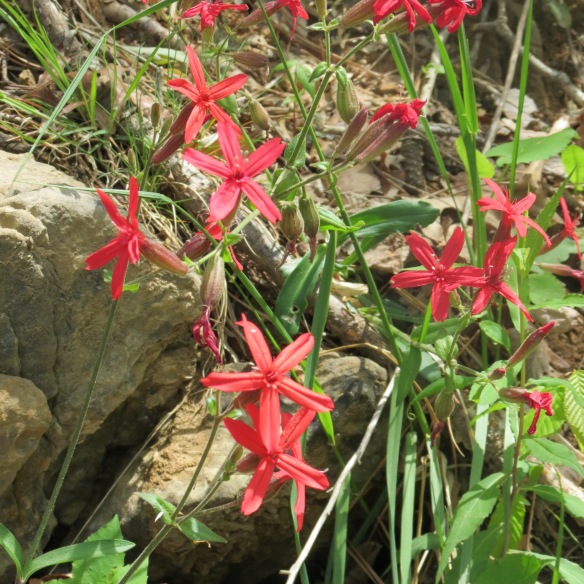With so much rain, everything is growing at an incredible rate and new wildflowers are popping up every day. Just yesterday, I noticed Ox-Eye Daisies in the fields and Fire Pinks and Goatsbeard along the roadsides. Fleabane, a member of the aster family that tends to grow prodigiously in Virginia, is probably the most common wildflower in bloom now.
We’re really trying to get our garden and orchard going this year, sometimes working in the mud because of all the rain. I’ve been busy adding perennials to the rock garden I started last year and found this little salamander hiding under one of the plants. I tried to identify him, but there are just too many salamanders in Virginia. Does anyone have any idea what species this guy might belong to?

We also have what I believe to be a Little Brown Bat roosting in our porch rafters. I was surprised to learn that while most bats hibernate in large colonies during the winter, they may remain solitary the rest of the year, roosting in trees as well as man-made structures. I hope this one gobbles up lots of insects!

Each year, the same birds (or their offspring) return to raise another generation and there are nests everywhere. Bluebirds and phoebes have nests in the porch rafters and are busy making dozens of food runs everyday. Crazy wrens will nest anywhere: a pair is raising its young in the log splitter! My next post will probably be an update on the nesting birds.






































